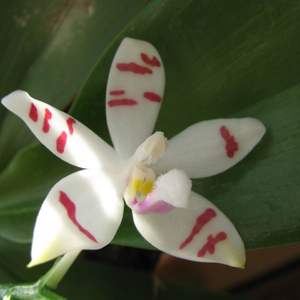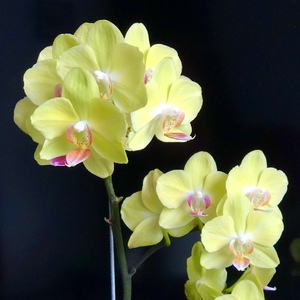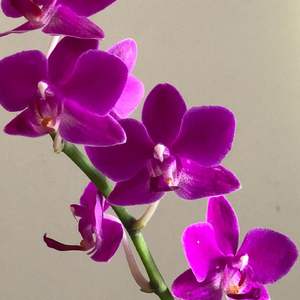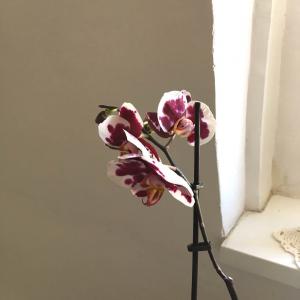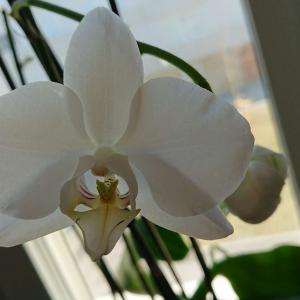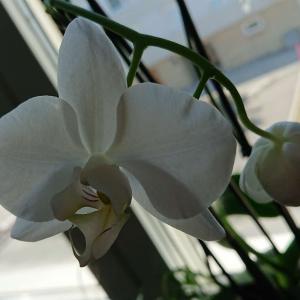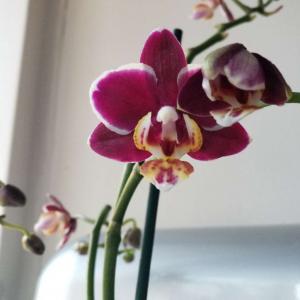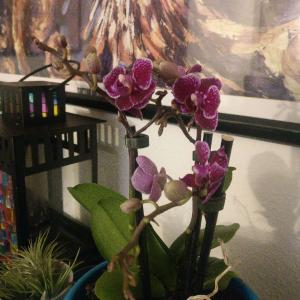文章
Miss Chen
2021年12月21日

Move over common moth orchids (Phalaenopsis) - it’s time for the Psychopsis orchids to shine! These hardy, unique-looking orchids are the perfect addition to any home or orchid collection. The striking appearance of the Psychopsis flowers led to its common nickname - the “butterfly orchid” as they closely resemble large brightly-colored butterflies. The flowers have long, thin petals that look like antennas and brightly colored sepals that resemble butterfly wings.
In fact, Psychopsis orchids evolved to trick insects into pollinating them through pseudocopulation, meaning that male insects attempt to mate with the flowers thinking they are female insects of the same species. During this process, the flowers are inadvertently pollinated. This deception is used by many other orchid (Orchidaceae) species as well including the fly orchid (Ophrys insectifera) and the bee orchid (Ophrys apifera).

Botanical Name Psychopsis
Common Name Psychopsis orchid, butterfly orchid
Plant Type Orchid
Mature Size 12-16" tall
Sun Exposure Bright, indirect light
Soil Type Sphagnum moss, bark mix
Soil pH 5.5 - 6.5
Bloom Time Varies
Flower Color Yellow, orange, pink, red.
Native Area Central America, Southern America
How to Grow Psychopsis Orchids
Psychopsis is a unique genus of sympodial orchids native to the wet rainforests and upland forest habitats of Central and South America. In their native habitat, Psychopsis orchids are epiphytic - meaning they grow on the surface of plants and trees and derive most of their nutrients and moisture from the air around them. However, Psychopsis orchids are well-adapted to indoor growing as well and are generally considered to be a hardy genus of orchids.
When grown in the right conditions, Psychopsis orchids can flower at regular intervals throughout the entire year. Mature and healthy Psychopsis can have several inflorescences with more than one flower per inflorescence. In fact, they can flower continuously on the same inflorescence for up to 10 years! So once the flowers on your Psychopsis fall off, be sure not to remove the inflorescence until it falls off naturally. Unlike some other orchid species, Psychopsis orchids do not require a well-defined rest period to stimulate flowering.
Light
Choose a location that receives bright, indirect light for your Psychopsis orchid. Psychopsis orchids can tolerate direct morning and/or evening sun but must be shielded from the intense midday sun.
Too much light can result in smaller, paler flowers while conditions that are too shady will result in fewer flowers (or no flowers at all) that are small and brightly colored. Ideally, Psychopsis orchids should receive at least 10 hours of daylight, which may require grow lights to achieve depending on your location and the time of year.
Soil
Since Psychopsis orchids grow as epiphytes in their natural habitat, they typically do best when grown in soilless potting mediums. Sphagnum moss or a mixture of bark and organic matter are popular choices for Psychopsis orchids.
Ensuring that the roots receive adequate airflow is important, so keep this in mind when choosing a potting medium for your Psychopsis orchid. Alternatively, if you want to take the guesswork out of choosing an appropriate potting mix, many greenhouses and nurseries offer pre-made orchid potting mixes.

Water
Like most orchids, Psychopsis orchids thrive in moist conditions and appreciate frequent and abundant waterings. However, they should be allowed to nearly dry out between waterings and should never remain waterlogged. Do not allow stagnant water to sit around the delicate roots of the Psychopsis orchid - during watering excess water should flow freely from the bottom of the pot. Psychopsis orchids also benefit from having their potting medium regularly flushed out with pure, filtered water to ensure that the delicate roots are not burned by any salt present in unfiltered water.
Temperature and Humidity
Psychopsis orchids are native to the humid regions of South America and Central America, and as such, they require consistent humidity in order to thrive, and especially to bloom. Additionally, Psychopsis orchids require adequate air movement, as they do not tolerate stale conditions well.
In terms of temperatures, Psychopsis orchids grow well indoors as they require consistently warm temperatures. Temperatures should be kept above 60 degrees Fahrenheit during the evenings, and up to 90 degrees Fahrenheit during the day.
Fertilizer
Fertilizing Psychopsis orchids on a regular basis will help them to grow well and flower consistently. Experienced orchid growers use the “weekly, weakly” rule of thumb when it comes to feeding orchids which states that adding diluted fertilizer into regular waterings is better than feeding a full dose once a month. Apply a balanced fertilizer diluted to half or a quarter strength once per week for the best results.
In fact, Psychopsis orchids evolved to trick insects into pollinating them through pseudocopulation, meaning that male insects attempt to mate with the flowers thinking they are female insects of the same species. During this process, the flowers are inadvertently pollinated. This deception is used by many other orchid (Orchidaceae) species as well including the fly orchid (Ophrys insectifera) and the bee orchid (Ophrys apifera).

Botanical Name Psychopsis
Common Name Psychopsis orchid, butterfly orchid
Plant Type Orchid
Mature Size 12-16" tall
Sun Exposure Bright, indirect light
Soil Type Sphagnum moss, bark mix
Soil pH 5.5 - 6.5
Bloom Time Varies
Flower Color Yellow, orange, pink, red.
Native Area Central America, Southern America
How to Grow Psychopsis Orchids
Psychopsis is a unique genus of sympodial orchids native to the wet rainforests and upland forest habitats of Central and South America. In their native habitat, Psychopsis orchids are epiphytic - meaning they grow on the surface of plants and trees and derive most of their nutrients and moisture from the air around them. However, Psychopsis orchids are well-adapted to indoor growing as well and are generally considered to be a hardy genus of orchids.
When grown in the right conditions, Psychopsis orchids can flower at regular intervals throughout the entire year. Mature and healthy Psychopsis can have several inflorescences with more than one flower per inflorescence. In fact, they can flower continuously on the same inflorescence for up to 10 years! So once the flowers on your Psychopsis fall off, be sure not to remove the inflorescence until it falls off naturally. Unlike some other orchid species, Psychopsis orchids do not require a well-defined rest period to stimulate flowering.
Light
Choose a location that receives bright, indirect light for your Psychopsis orchid. Psychopsis orchids can tolerate direct morning and/or evening sun but must be shielded from the intense midday sun.
Too much light can result in smaller, paler flowers while conditions that are too shady will result in fewer flowers (or no flowers at all) that are small and brightly colored. Ideally, Psychopsis orchids should receive at least 10 hours of daylight, which may require grow lights to achieve depending on your location and the time of year.
Soil
Since Psychopsis orchids grow as epiphytes in their natural habitat, they typically do best when grown in soilless potting mediums. Sphagnum moss or a mixture of bark and organic matter are popular choices for Psychopsis orchids.
Ensuring that the roots receive adequate airflow is important, so keep this in mind when choosing a potting medium for your Psychopsis orchid. Alternatively, if you want to take the guesswork out of choosing an appropriate potting mix, many greenhouses and nurseries offer pre-made orchid potting mixes.

Water
Like most orchids, Psychopsis orchids thrive in moist conditions and appreciate frequent and abundant waterings. However, they should be allowed to nearly dry out between waterings and should never remain waterlogged. Do not allow stagnant water to sit around the delicate roots of the Psychopsis orchid - during watering excess water should flow freely from the bottom of the pot. Psychopsis orchids also benefit from having their potting medium regularly flushed out with pure, filtered water to ensure that the delicate roots are not burned by any salt present in unfiltered water.
Temperature and Humidity
Psychopsis orchids are native to the humid regions of South America and Central America, and as such, they require consistent humidity in order to thrive, and especially to bloom. Additionally, Psychopsis orchids require adequate air movement, as they do not tolerate stale conditions well.
In terms of temperatures, Psychopsis orchids grow well indoors as they require consistently warm temperatures. Temperatures should be kept above 60 degrees Fahrenheit during the evenings, and up to 90 degrees Fahrenheit during the day.
Fertilizer
Fertilizing Psychopsis orchids on a regular basis will help them to grow well and flower consistently. Experienced orchid growers use the “weekly, weakly” rule of thumb when it comes to feeding orchids which states that adding diluted fertilizer into regular waterings is better than feeding a full dose once a month. Apply a balanced fertilizer diluted to half or a quarter strength once per week for the best results.
0
0



